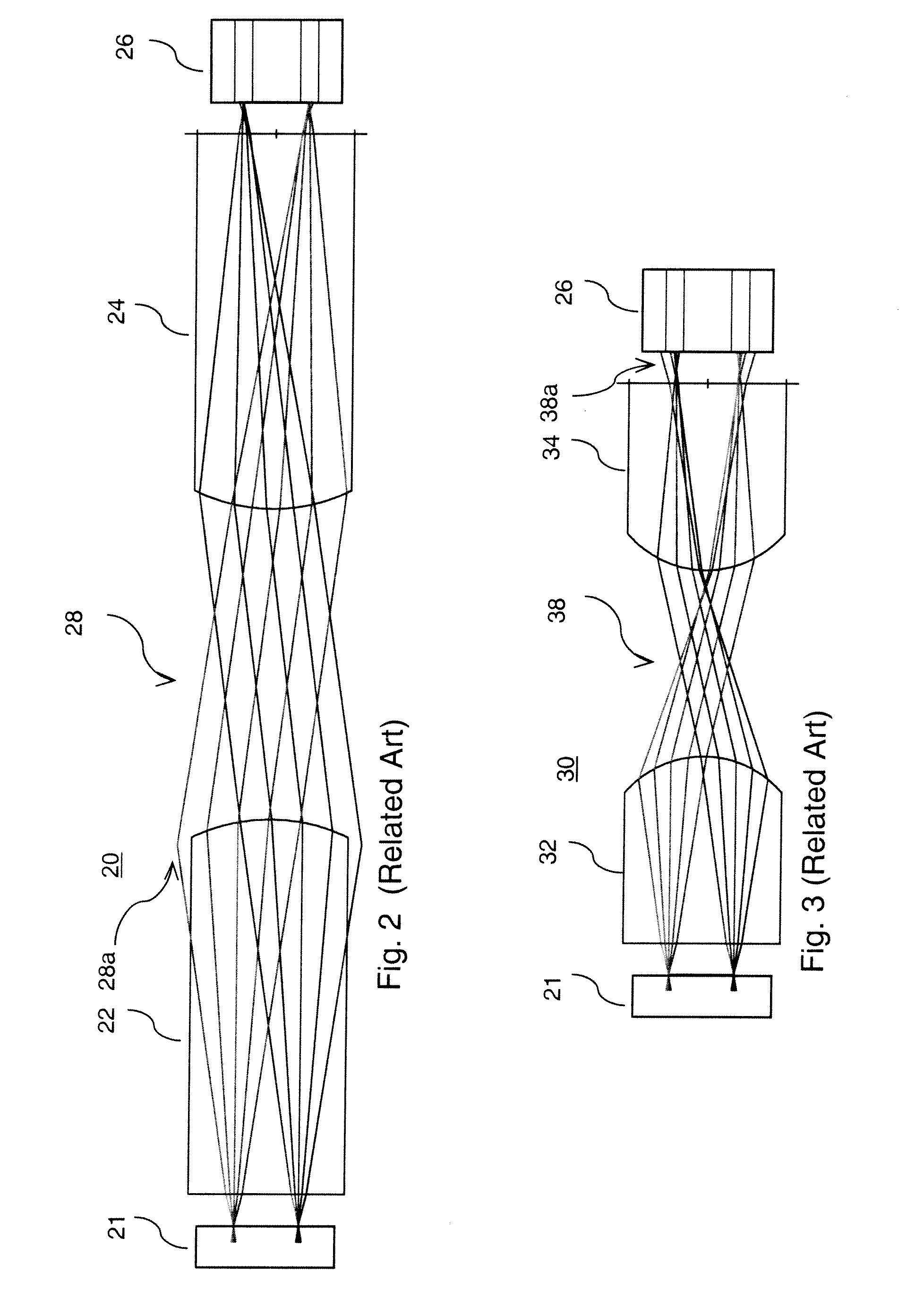Multi-core fiber optical coupling elements
a fiber optic coupling element and multi-core technology, applied in the field of integrated circuits and silicon chip technology, can solve the problems of affecting the performance of optical coupling elements, so as to improve optical coupling performance, simplify the package, and reduce the cost
- Summary
- Abstract
- Description
- Claims
- Application Information
AI Technical Summary
Benefits of technology
Problems solved by technology
Method used
Image
Examples
Embodiment Construction
[0050]The invention will now be described with reference to the drawing figures, in which like reference numerals refer to like parts throughout. It is emphasized that, according to common practice, the various features of the drawing are not necessary to scale. On the contrary, the dimensions of the various features can be arbitrarily expanded or reduced for clarity.
[0051]The current standard, for example, is a 12 channel optical transceiver mating with a 12 fiber ribbon cable, with each fiber containing only a single core. However, an exemplary aspect of the invention provides a means to interconnect a modified version of today's transceiver with an optical fiber containing multiple cores, thereby dramatically increasing the number of available optical channels without increasing the transceiver's package size.
[0052]Therefore, an exemplary embodiment in accordance with the invention provides an apparatus and technique to optically interconnect multi-core optical fiber with a compa...
PUM
 Login to View More
Login to View More Abstract
Description
Claims
Application Information
 Login to View More
Login to View More - R&D
- Intellectual Property
- Life Sciences
- Materials
- Tech Scout
- Unparalleled Data Quality
- Higher Quality Content
- 60% Fewer Hallucinations
Browse by: Latest US Patents, China's latest patents, Technical Efficacy Thesaurus, Application Domain, Technology Topic, Popular Technical Reports.
© 2025 PatSnap. All rights reserved.Legal|Privacy policy|Modern Slavery Act Transparency Statement|Sitemap|About US| Contact US: help@patsnap.com



